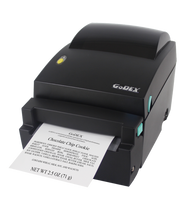The Future of Eco-Friendly Labeling: Sustainable Materials, Inks, and Printing Practices
21st Jul 2025
What if your labels could do more than just look good? What if the labels on your products didn’t just deliver branding and information—but also played a role in reducing environmental damage?
Every year, a massive amount of label liner waste ends up in landfills across the U.S.. That’s just one piece of the labeling puzzle. Add petroleum-based inks, energy-hungry printers, and non-biodegradable label stock to the mix, and the environmental cost of packaging becomes even more alarming.
As we face increased scrutiny from regulators and growing demand from eco-conscious consumers, businesses are under pressure to rethink every part of their packaging—including their labels. Sustainability isn’t just a trend anymore; it’s an expectation. The push for greener packaging is transforming how we approach label materials, ink formulation, and even the printing technology we rely on.
At DuraFast Label Company, we understand this shift. We’ve long focused on offering color and thermal label printing solutions that meet today’s operational needs while preparing our clients for tomorrow’s environmental standards. Whether you're looking to purchase blank inkjet labels, upgrade to high-quality thermal label printers, or find affordable ink cartridges for your printers, our catalog is geared toward both performance and sustainability.
In this article, we’re taking a hard look at the future of sustainable labeling. We’ll cover biodegradable and recyclable label materials, advances in environmentally safe inks, how printing technologies are becoming more energy efficient, and why brands that adopt eco-friendly labeling practices now will be better positioned for compliance and consumer loyalty down the road.
Rethinking Label Stock: Biodegradable, Compostable, and Recyclable Options
The foundation of any label is the material it's printed on. Traditionally, labels have been made from vinyl, PVC, and other plastic-based films that are difficult or impossible to recycle. However, sustainable alternatives have emerged, providing viable options for brands committed to reducing their environmental footprint.
Common Sustainable Label Materials:
- Paper-based label stock: Made from responsibly sourced wood pulp, these labels break down more easily in compost or recycling systems.
- Sugarcane bagasse: A byproduct of sugar production, this fibrous material creates labels that are both biodegradable and compostable.
- Hemp and cotton: Agricultural byproducts that are less chemically intensive to produce and offer a natural aesthetic.
- PLA (polylactic acid) film: Derived from corn starch, PLA is a compostable plastic alternative that works well with many high-quality color label printers.
These materials not only minimize landfill waste but also align with zero-waste packaging initiatives.
The Role of Label Liner and Adhesives:
Another important but often overlooked component is the liner and adhesive used in pressure-sensitive labels. Silicone-coated liners, while popular, are rarely recycled. However, linerless label technology and recyclable liner systems are gaining traction.
- Linerless labels eliminate waste entirely by printing directly onto a continuous roll.
- Washable adhesives allow labels to be easily removed during recycling, especially for PET and HDPE plastic containers.
Making the switch to greener materials might slightly raise costs initially, but the long-term environmental and branding benefits often outweigh the investment.
Greener Inks: Reducing Toxicity Without Sacrificing Quality
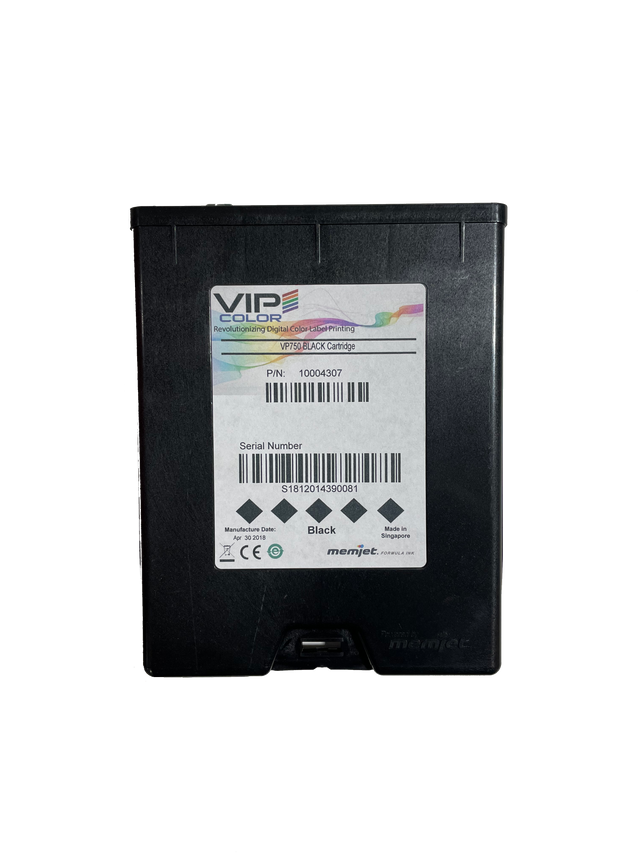
While label stock gets the most attention, the inks used in printing are just as critical. Petroleum-based inks often contain volatile organic compounds (VOCs), heavy metals, and other toxins that harm the environment and human health.
Eco-Friendly Ink Alternatives:
- Water-based inks: With fewer VOCs, these inks reduce air pollution and workplace hazards.
- Vegetable-based inks: Derived from soy, linseed, or canola oil, these inks are more biodegradable than petroleum-based options.
- UV-curable inks: Though not biodegradable, UV inks are cured using light rather than heat, which saves energy and avoids solvent emissions.
- Aqueous pigment inks: Ideal for use in modern inkjet label printers, these inks produce sharp, fade-resistant images without harmful solvents.
The use of environmentally safe inks is expanding across industries, especially where food, cosmetics, and pharmaceuticals require non-toxic, safe labeling. Choosing the right ink for your printer and application can reduce environmental risks while ensuring vibrant print quality.
Compatibility with Existing Equipment:
One common question is whether switching to eco-friendly inks requires new hardware. In most cases, water- or vegetable-based inks can be used in existing high-quality color label printers with little or no modification. That means it’s possible to reduce toxicity without overhauling your print infrastructure.
Energy-Efficient Printing Technologies
The printing process itself can be energy-intensive, particularly for high-volume commercial applications. However, modern innovations in thermal and inkjet printing have significantly lowered energy consumption without compromising performance.
Energy-Saving Features to Look For:
- LED drying systems: Consume far less energy than traditional heat-based drying.
- Low-temperature fusing: Common in some laser-based systems, reducing overall power usage.
- Sleep and standby modes: Help lower idle energy consumption.
- High-efficiency printheads: Deliver precise droplet control, reducing waste.
Benefits of Thermal Label Printers: 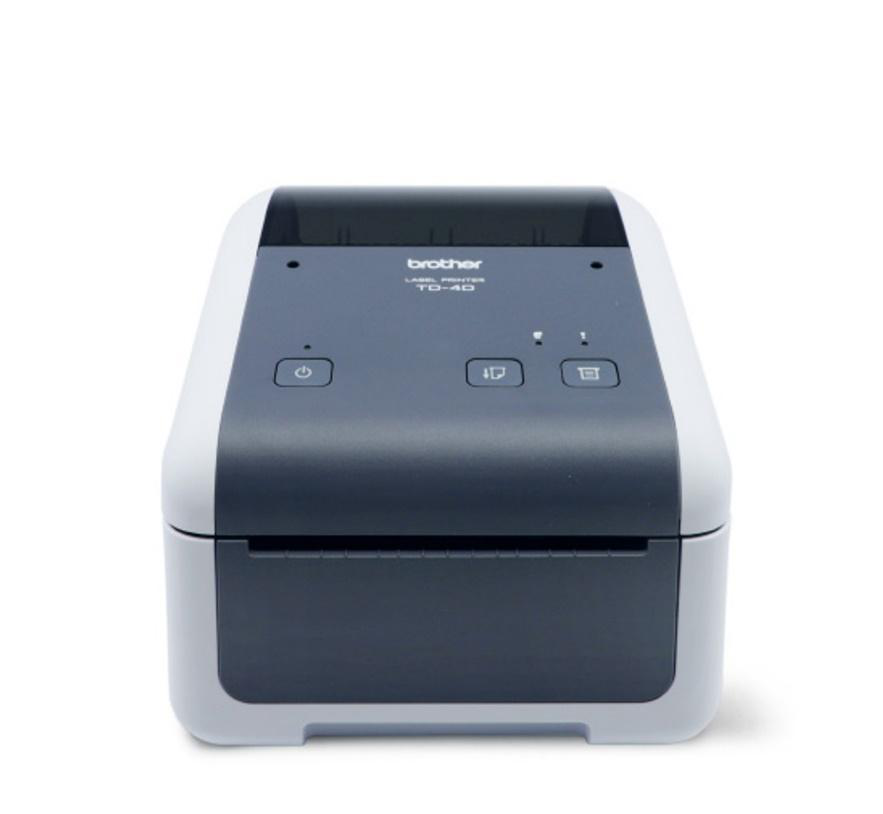
Direct thermal and thermal transfer printers are among the most energy-efficient labeling solutions available. With no need for ink or toner, thermal printers eliminate one major waste stream altogether. That makes them ideal for shipping labels, inventory tags, and barcode applications where color isn’t necessary.
When evaluating thermal printing options, it’s wise to invest in high-quality thermal label printers that are built to last. Look for devices with Energy Star certification and long-lasting components to minimize replacement waste.
Why Sustainable Labeling Matters for Compliance and Branding
The push for sustainability is no longer a passing trend—it's a fundamental shift in the way businesses operate and how consumers make purchasing decisions. Eco-friendly labeling isn’t just about reducing environmental waste; it is increasingly becoming a key strategy for regulatory compliance and consumer engagement. With rising awareness of environmental issues, eco-conscious practices, and transparent labeling, businesses now have a greater incentive to integrate sustainability into their operations—especially through labeling.
Let’s take a deeper look at the major factors driving the need for eco-friendly labeling, from compliance requirements to consumer expectations and branding advantages.
Compliance Requirements: Meeting Regulatory Standards
As sustainability continues to take center stage in global markets, businesses must adhere to a growing number of environmental regulations. These regulations aim to minimize packaging waste, reduce carbon footprints, and ensure that materials used in consumer products are safe for both people and the planet. For companies, failure to comply with these requirements could result in fines, penalties, or even loss of market access. Let’s explore some of the key regulations that are pushing the need for eco-friendly labeling:
FDA Regulations on Food Packaging
The U.S. Food and Drug Administration (FDA) plays a significant role in regulating the materials used in food packaging. As part of its responsibility to protect consumers, the FDA has established guidelines to ensure that packaging materials are safe for food contact. In recent years, there has been an increasing emphasis on the use of safe inks and recyclable materials in food packaging. This is due to growing concerns about chemical migration from packaging into food products and the environmental impact of non-recyclable materials.
For example, labels with certain inks or coatings might be considered unsafe due to the possibility of leaching harmful chemicals. In response, the FDA has started requiring packaging to be made from materials that pose minimal environmental risk. This shift towards sustainability in packaging is becoming a major concern for businesses in the food industry, as failure to comply can lead to product recalls, fines, or a damaged reputation.
EU Directives and Environmental Compliance
The European Union (EU) has implemented some of the most stringent environmental regulations concerning packaging. The Packaging and Packaging Waste Directive requires businesses to reduce the environmental impact of their products through recyclable, compostable, or reusable packaging. This regulation is particularly important for manufacturers selling products within EU member states, as non-compliance can result in significant fines and restricted market access.
Additionally, the EU is encouraging companies to adopt more sustainable packaging practices, including using renewable resources and reducing plastic use. In this context, labeling becomes a critical tool for conveying to consumers that a product’s packaging is in compliance with these environmental directives. Eco-friendly labels that clearly identify the recyclable or compostable nature of packaging can help brands avoid penalties while also showcasing their commitment to sustainability.
Retailer Sustainability Scorecards
Retailers such as Walmart, Amazon, and other large-scale distributors are increasingly prioritizing sustainability when selecting suppliers. These retailers have implemented sustainability scorecards—systems that evaluate the environmental performance of suppliers based on their adherence to eco-friendly practices. These scorecards assess a range of factors, including the use of sustainable materials, waste reduction practices, and eco-friendly labeling.
Suppliers that score poorly on these sustainability evaluations may face reduced shelf space, product rejections, or exclusion from certain product categories. Consequently, businesses must integrate sustainable labeling practices to improve their sustainability scorecard rankings. Labels that indicate environmentally friendly practices, such as being recyclable, biodegradable, or made from renewable resources, can give a company the competitive edge needed to maintain positive relationships with these major retailers.
Choosing the Right Equipment and Supplies for Sustainable Labeling
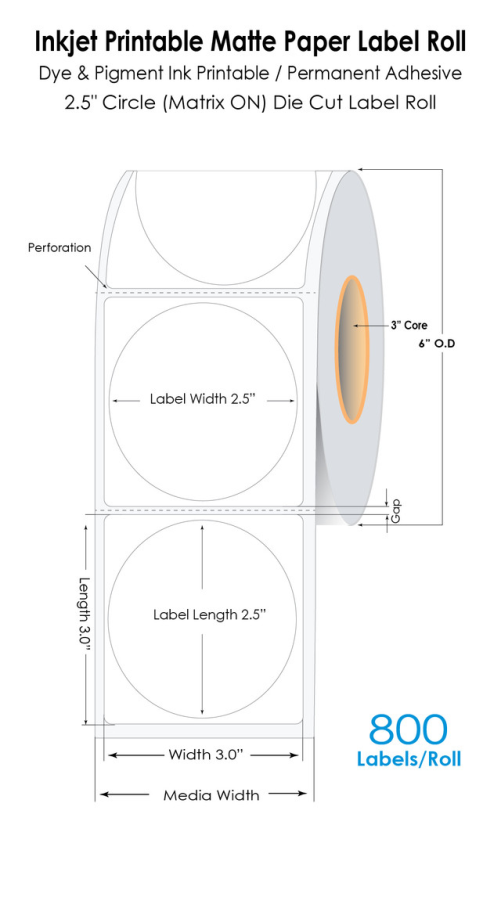
Making the shift to eco-friendly labeling doesn’t mean sacrificing performance. Whether you're handling short-run batches or industrial-scale jobs, the right equipment and supplies make all the difference.
Tips for Making Smart Purchasing Decisions:
- Invest in color label printers compatible with aqueous pigment inks for vibrant yet sustainable printing.
- Choose affordable blank inkjet labels that are made from recyclable or compostable materials.
- Check printer specs for energy-saving certifications.
- Use ink cartridges for printers that are refillable or easily recyclable.
- Buy thermal label printers for non-color applications to minimize material waste.
Digital Printing: Reducing Overproduction and Waste
Digital label printers allow for just-in-time production. Instead of printing thousands of pre-branded labels that might go unused, digital printing lets companies create labels on demand, reducing overproduction and obsolete inventory.
Combined with sustainable materials and inks, this approach helps close the loop on waste reduction.
Waste Reduction Strategies Beyond the Label
While using eco-friendly labels is an important first step, it is just one piece of a much larger puzzle. To truly create a sustainable business, companies must integrate waste reduction strategies across their entire supply chain and packaging processes. This holistic approach not only reduces waste but can also lead to cost savings, improve operational efficiency, and enhance brand reputation.
Let’s take a closer look at several key strategies that businesses can implement to improve their sustainability efforts beyond just choosing eco-friendly labels.
1. Implement Liner and Backing Recycling Programs
When using adhesive labels, businesses often overlook the waste generated by the liner and backing—the material that holds the label before it’s applied. This non-stick paper or film can end up in landfills, contributing to the growing problem of packaging waste. However, there are solutions available to minimize this environmental impact.
Liner recycling programs can be a game changer in reducing label-related waste. By partnering with companies that specialize in recycling the backing material, businesses can ensure that it’s reused or repurposed. Some innovative programs even allow businesses to send their used label liners to be cleaned and reprocessed into new materials.
Additionally, using recyclable liners made from sustainable materials, such as PET (Polyethylene Terephthalate), can further minimize environmental harm. PET is highly recyclable, and choosing liners made from this material can reduce the overall waste sent to landfills.
2. Train Staff on Using Energy-Saving Features in Printers

Printers are a crucial part of the labeling process, but they can also be a significant source of energy consumption. A business’s energy usage can directly affect its sustainability goals, so it’s important to focus on ways to optimize energy consumption in the printing process.
Training staff to use energy-saving features in printers can help reduce energy costs and overall consumption. Modern label printers often come equipped with power-saving settings that can minimize the amount of energy used during operation, such as automatic power-down functions or low-power modes when the printer is not in use.
For instance, some high-quality thermal label printers are designed to consume less electricity while printing, compared to traditional inkjet printers. Teaching employees how to use these energy-saving features, or encouraging the use of high-efficiency color label printers, can contribute to the broader goal of reducing a business’s carbon footprint.
Moreover, regular maintenance of printers—such as ensuring they are properly cleaned and maintained—can also contribute to energy savings by improving their overall efficiency and reducing the need for repairs or replacements.
3. Reduce Label Size to Limit Material Usage
A simple yet effective waste reduction strategy is to reduce the size of labels used in packaging. By making labels smaller, businesses can decrease the amount of material required per label, which, over time, adds up to significant reductions in waste and material costs.
This approach has a dual benefit:
- Lower material consumption: Reducing the size of each label directly cuts down on the amount of paper, ink, and adhesives used.
- Less energy and resources for production: Smaller labels mean less ink needs to be printed and less energy is required to produce the labels in the first place.
While the size reduction might seem small in terms of individual labels, the cumulative effect across large production volumes can have a significant environmental impact. This approach can also have cost-saving benefits for businesses that produce high volumes of products, as smaller labels generally cost less to produce.
However, it’s important to strike a balance between functionality and size. The label must still contain all the necessary information (such as brand logos, product details, regulatory compliance marks, and more) while minimizing waste.
4. Conduct Life-Cycle Assessments to Find Further Opportunities for Improvement
A life-cycle assessment (LCA) is an in-depth analysis of the environmental impact of a product from its inception to its disposal. This includes evaluating the environmental footprint of every component, from raw materials and production processes to transportation, usage, and end-of-life disposal.
For businesses aiming to integrate sustainability into their operations, conducting a comprehensive LCA can uncover new opportunities for waste reduction that may not be immediately obvious. This can include:
- Assessing the sustainability of raw materials used in production.
- Identifying areas in the manufacturing process where energy or water can be saved.
- Analyzing the carbon footprint of transportation and distribution methods.
- Finding ways to extend the life of products and packaging through reuse or refill
By conducting an LCA, businesses can pinpoint inefficiencies and areas where waste reduction can be further achieved. It also allows companies to measure the actual impact of their sustainable practices and make data-driven decisions to improve their environmental performance.
Additionally, businesses can use the results of the LCA to make informed choices about packaging, labeling, and other supply chain processes. For example, they might choose more energy-efficient production methods or opt for suppliers who use greener manufacturing practices.
5. Choose Suppliers with Transparent Environmental Policies
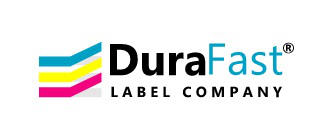
A business's sustainability efforts extend beyond its immediate operations—it also depends on the actions of its suppliers. When selecting suppliers for raw materials, packaging, and labeling components, it's essential to choose partners with transparent and robust environmental policies. By selecting eco-conscious suppliers, businesses can ensure that their entire supply chain supports sustainable practices.
Some ways to ensure suppliers are aligned with your sustainability goals include:
- Evaluating their environmental policies: Ask suppliers about their environmental standards and how they minimize their environmental impact. Do they prioritize recyclable or biodegradable materials? Do they implement energy-saving measures?
- Assessing their waste management practices: How do they handle production waste? Are they committed to zero-waste or low-waste production processes?
- Certifications and audits: Suppliers that have certifications such as ISO 14001 (Environmental Management)or Fair Trade are more likely to engage in sustainable practices. Auditing your suppliers’ practices ensures that they align with your company’s sustainability goals.
By choosing suppliers who prioritize sustainability and transparency, businesses can further reduce their environmental impact while ensuring that the materials and processes they use are as eco-friendly as possible.
Integrating These Strategies Into Your Business
Implementing waste reduction strategies requires a comprehensive, long-term commitment from all levels of the organization. From reducing the size of labels and training staff on energy-efficient printer usage to partnering with eco-conscious suppliers, businesses must take a proactive approach to sustainability.
These strategies go beyond labeling, enabling companies to reduce their overall environmental footprint while potentially lowering costs and improving operational efficiency. Whether it’s choosing recyclable materials, optimizing energy consumption, or conducting life-cycle assessments, businesses that adopt these practices can make a meaningful difference in the fight against climate change.
Adopting a comprehensive sustainability strategy isn’t just about staying compliant with regulations—it’s about future-proofing your business by aligning with the growing demand for sustainable products and practices. Sustainable labeling is an essential component of this strategy, but it should be part of a larger effort to minimize waste, optimize resources, and enhance your overall environmental performance.
By integrating these waste reduction strategies, your business can position itself as a responsible, forward-thinking brand that values sustainability and is committed to making a positive impact on the environment.
Where Packaging Meets Responsibility: Why Now Is the Time to Act

Are your current labeling practices helping your business move toward a more sustainable future—or holding it back?
Sustainability is becoming a business necessity, not a nice-to-have. As regulations tighten and eco-conscious consumer behavior becomes more influential, organizations must reassess how they approach packaging and labeling.
At DuraFast Label Company, we provide the tools you need to meet this challenge head-on. From one of the best selections of color label printers to an extensive range of affordable blank inkjet labels online, our goal is to support responsible businesses in making smarter decisions. Whether you're looking to purchase blank inkjet labels that align with your environmental goals or want advice on choosing high-quality thermal label printers that reduce waste, we're here to help.
Our printers are compatible with eco-friendly inks and energy-saving technologies. Our blank label stock includes recyclable and compostable options for a wide range of applications. And with ink cartridges for printers that balance cost with sustainability, we make it easier to adopt green labeling practices without sacrificing quality or efficiency.
Ready to print smarter and greener?
Order your high-quality color label printers, blank inkjet labels, and thermal label printers from DuraFast Label Company today—and take a confident step toward sustainable labeling that works for your business, your customers, and the planet.
